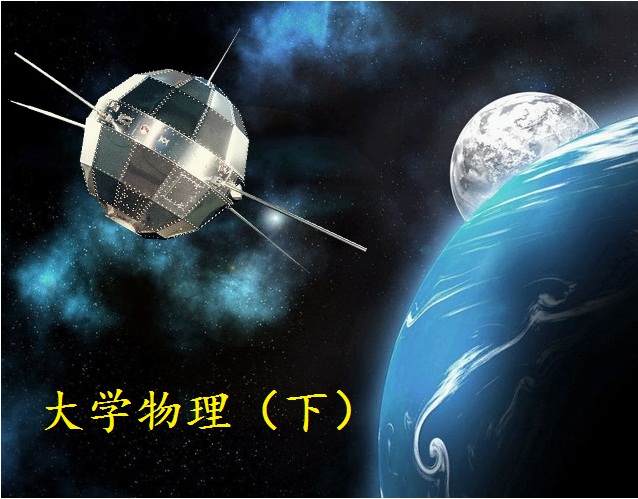
当前课程知识点:“一带一路”沿线国家跨文化商务交际 > 第四章 哈萨克斯坦 > 4.1 哈萨克斯坦社会文化背景概况 > 4.1 哈萨克斯坦社会文化背景概况
返回《“一带一路”沿线国家跨文化商务交际》慕课在线视频课程列表
Hey Peter how do you know about Kazakhstan
Well it’s one of our neighboring countries
How does Kazakhstan connect with the Belt and Road Initiative
Three years ago the great concept of the Silk Road Economic Belt
began to take shape around the world
Three years later
the young city of Astana (renamed Nur-Sultan in March 2019)
the Kazakh capital is booming on the back of the Belt and Road Initiative
Then how’s everything going in Kazakhstan
Very positive More than 3,000 Chinese companies
are now based in Kazakhstan
making them Nur-Sultan's main force in developing connectivity
Today's China-Kazakhstan cooperation is moving towards
diversified development and shining in areas
such as finance and tourism
That’s pretty cool
I am eager to explore more about Kazakhstan
Let’s go
Hello everyone
Welcome to our Intercultural Business Tour
I am your lecturer Qiang Weiru
from Dalian University of Foreign Languages
So now
please hop on our tour bus and I’ll be guiding you
today to explore the business scenario in Kazakhstan
The Belt and Road Initiative has ushered
in an upsurge in China- Kazakhstan cooperation
on economy trade production capacity energy and technology
The two countries are working to improve cross-border connectivity
bringing China’s transportation advantages on land and by sea
with the world’s biggest landlocked country
to turn Kazakhstan into a key hub
for transportation on the Eurasia continent
Firstly I’d like you to enjoy a video
and find out some interesting facts about Kazakhstan
Before you start let’s look at some word tips
steppe
indomitable
nomadic
valiant
emerald
Almaty
Akorda
mosque
synagogue
triennial
UN Rio+20 Conference
Okay now let’s start watching the video
It is advisable you take down notes on the following questions
1 What symbolises the nomadic freedom of Kazakhstan
2 What was Kazakhstan historically abundant in
3 What natural beauty does Kazakhstan boast
4 How does education prove to be important in Kazakhstan
Ready Now let’s watch it
Kazakhstan where history has been written
on the windblown steppe and the future glitters
in thousands of lights on the horizon
For Kazakhstan
its past surely informed the indomitable spirit it exhibits today
From the wild horses and endless steppe
that symbolize nomadic freedom
to the rapidly growing infrastructure and vibrant cities
the country knows now
Kazakhstan has evolved and adapted
to become successful stable and independent
Not in spite of its history but because of it
According to ancient writings
the Kazakhs were valiant and courageous
Innovative adaptable
They played a defining role shaping central Eurasia
Today what’s past is prologue
as Kazakhstan again takes center stage as
a dynamic leader in the region
Today Kazakhstan
a country of more than a hundred ethnic groups and 17 religions
is well known for its religious tolerance and ethnic diversity
Historically this former breadbasket
of the Soviet Union was also a large producer of metals
coal oil and livestock products
Today this abundance of natural resources is
at the heart of the Kazakh economy
On a clear day
there is no sky more blue
no clouds more majestic than those rolling over
the steppe or kissing the peaks of the Tianshan Mountain
Kazakhstan also boasts emerald green pine forests and miles
of deep canyons where the light plays red
and gold and shadows cast a spell on anyone with view
to the canyon walls
The mountains host a variety of adventurers in every season
from skiing snowboarding and skating to hiking
riding and camping
Kazakhstan offers something for everyone
But apart from the varied and stunning natural
beauty of the country cities have grown
High-rise buildings and green space mingle
with the new but historically minded Opera House
and the presidential residence the Akorda
Massive shopping malls rise up alongside the ultra-modern peace
and harmony palace pyramid
The importance of education to the country is reflected
in its 99.7% literacy rate - one of the highest in the world
Almaty about 300 kilometers to the south of Astana
is the banking and trade center of the country
Kazakhstan also boasts beautiful mosques churches
and synagogues that are representative
of Kazakhstan’s policy of religious and ethnic tolerance
In fact Kazakhstan initiated and hosts triennial congresses
of leaders of world and traditional religions
with the fifth one in 2015
The past and present meet on the grasslands
in the mountains and now in the bustling cities
The stories and promises are whispered
through the canyons as Kazakhstan continues
to build a new Silk Road
an international center for trade and commerce
and a new legacy for the 21st century
Peace and harmony
however don’t just come with tolerance and cooperation
The people of the world must be fed body mind and spirit
2014 to 2024 has been designated
as the UN decade of sustainable energy for all
That’s why Kazakhstan is opening doors to wind
solar and other alternative energy technologies
while also developing its massive petroleum natural gas
and mineral extraction industries
The miles of open steppe make the perfect solar
and wind energy labs
Kazakhstan’s green bridge initiative supported
by the UN Rio+20 Conference is another important
initiative being undertaken in Kazakhstan
As the world’s largest landlocked country
Kazakhstan has never taken water for granted
That’s why the country is focused
on developing new systems
technologies and international relationships
for securing the world’s water supply
Kazakhstan has transformed
from a recipient to a donor of international aid
As one of the most dynamically growing economies
with a double-digit GDP per capita growth during its independence
and leading rates in foreign investment influx in the region
Kazakhstan announced the launch
of a cos-aid official development assistance program
In fact it has been more than six years
since the country began providing assistance in the region
and to Afghanistan
The prism of progress is a complex set of angles
and lines that connect past to present
and present to future
For Kazakhstan
that vision has been hard one through the ages
But the strife known by the people has also created
a sense of shared responsibility
a sense of place and purpose and drive that inspire the nation
to take its lessons beyond its borders to the world
When today goes into the history books
Kazakhstan will have written many chapters
about peace and progress innovation and ideas
These values were born upon the steppe by the people
who set their eyes on a bright new horizon
and a world of endless possibility
So have you got all the answers
Now let’s check your answers
1 What symbolises the nomadic freedom of Kazakhstan
The wild horses and endless steppe
2 What was Kazakhstan historically abundant in
Metals coal oil and livestock products
3 What natural beauty does Kazakhstan boast
Emerald green pine forests and miles of deep canyons
4 How does education prove to be important in Kazakhstan
The importance of education to the country is reflected
in its 99.7% literacy rate - one of the highest in the world
Now let’s move on to the Country Profile
of Kazakhstan and learn more about
the basic info of this country
Its official name is The Republic of Kazahstan
The official language is Kazakh and Russian
The currency is Tenge (KZT)
And the capital city is Nur-sultan
Kazakhstan is the ninth largest country
in the world and also the world’s largest landlocked country
It is located in the central Asia in the vast
and relatively isolated space between Eurasia
bordering Russian to the north and northwest China to the east
Kazakhstan has a long and rich history
from a nomadic civilization before the first millennium B.C.
through many expansions and historic transitions
to the modern nation-state it is today
Ethnic Kazakhs constitute the majority
of the country’s population
Other ethnic groups in Kazakhstan include Russians Uzbeks etc
The fusion of different ethnic groups has created a unique culture
that relies on both an agricultural and an industrial way of life
Kazakhstan is rich in natural resources such as oil
natural gas and minerals
After it gained independence in 1991
Kazakhstan went through a period of economic decline
Since then
a series of economic reforms have allowed Kazakhstan’s economy
to gain tremendous growth and move toward unexplored industries
in the energy sector
which were largely untapped before
Now 87% of Kazakhstan’s electricity is generated
from fossil fuels
with 12% produced from hydro power and less
than one percent from solar and wind facilities
Coal produced in the northern part of the country
is used to create more than 70%
of the country’s electricity supply
Kazakhstan has some of the largest uranium preservation
in the world and is the world’s largest uranium producer
By entering the year 2020
Kazakhstan’s economy is highly energy-intensive
and consumes two to three times more energy
than the average for OECD countries
Today Kazakhstan is still struggling to maintain a balance
between its industrial and agricultural sectors
but in general
Kazakhs are in a period of growth and improvement
As Kazakhstan strives to open its economy and borders
to the rest of the world
those who wish to invest or do business with Kazakhstan
should be aware of the unique business culture
and etiquette of the country
-课程导语
-1.1 泰国的社会文化背景概况
-1. 2 泰国的核心文化价值观
-1.3 泰国商务礼仪
-1.4 泰国商务实践
-1.5 泰国商务中的跨文化交际陷阱
-1.6 Discussion
-1.7 Unit test
--1.7 Unit Test
-2.1 新加坡社会文化背景概况
-2.2 新加坡核心文化价值观
-2.3 新加坡商务礼仪
-2.4 新加坡商务实践
-2.5 新加坡商务中的跨文化交际陷阱
-2.6 Discussion
-2.7 Unit test
--2.7 Unit test
-3.1 马来西亚社会文化背景概况
-3.2 马来西亚核心文化价值观
-3.3 马来西亚商务礼仪
-3.4 马来西亚商务实践
-3.5 马来西亚商务语境中的跨文化交际陷阱
-3.6 Discussion
-3.7 Unit test
--3.7 Unit test
-4.1 哈萨克斯坦社会文化背景概况
-4.2 哈萨克斯坦核心文化价值观
-4.3 哈萨克斯坦商务礼仪
-4.4 哈萨克斯坦商务实践
-4.5 哈萨克斯坦商务语境中的跨文化交际陷阱
-4.6 Discussion
-4.7 Unit test
--4.7 Unit test
-5.1 沙特阿拉伯的社会文化背景概况
-5.2 沙特阿拉伯的核心文化价值观
-5.3 沙特阿拉伯商务礼仪
-5.4 沙特阿拉伯商务实践
-5.5 沙特阿拉伯商务语境中的跨文化交际陷阱
-5.6 Discussion
-5.7 Unit test
--5.7 Unit test
-6.1阿联酋的社会文化背景概况
-6.2阿联酋的核心文化价值观
-6.3阿联酋商务礼仪
-6.4阿联酋商务实践
-6.5阿联酋商务中的跨文化交际陷阱
-6.6 Discussion
-6.7 Unit test
--6.7 unit test
-7.1 印度的社会文化背景概况
-7.2 印度的核心文化价值观
-7.3 印度商务礼仪
-7.4 印度商务实践
-7.5 印度商务语境中的跨文化交际陷阱
-7.6 Discussion
-7.7 Unit test
--7.7 Unit test
-8.1 俄罗斯社会文化背景概况
-8.2 俄罗斯核心文化价值观
-8.3 俄罗斯商务礼仪
-8.4 俄罗斯商务实践
-8.5 俄罗斯商务中的跨文化交际陷阱
-8.6 Discussion
-8.7 Unit test
--8.7 Unit test
-9.1 波兰社会文化背景概况
-9.2 波兰核心文化价值观
-9.3 波兰商务礼仪
-9.4 波兰商务实践
-9.5 波兰商务中的跨文化交际陷阱
-9.6 Discussion
-9.7 Unit test
--9.7 Unit test
-10.1南非的社会文化背景概况
-10.2南非的核心文化价值观
-10.3南非商务礼仪
-10.4南非商务实践
-10.5南非商务中的跨文化交际陷阱
-10.6 Discussion
-10.7 Unit test
--10.7 Unit test
-期末考试



